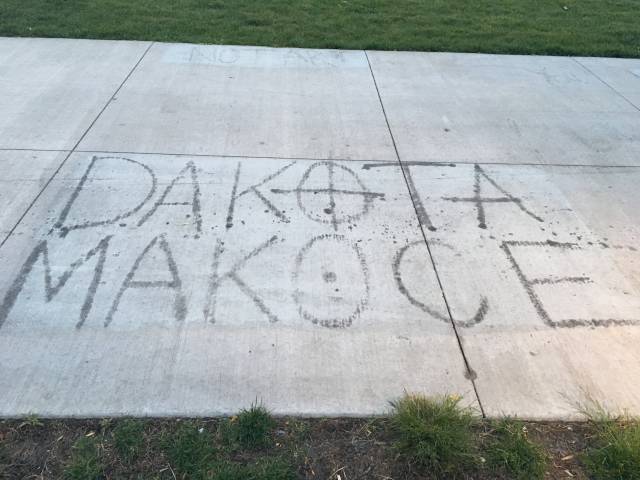
A giant bright blue rooster and an enormous spoon holding up a crimson cherry are drawing crowds to the Minneapolis Sculpture Garden this summer.
Bigness is pervasive in the United States, and it seems sculptures are no different.
However, it’s a barely noticeable nearby empty space – where another sculpture was briefly erected, and then removed earlier this year – that arguably says more about America.
The wooden sculpture – Scaffold, by Los Angeles-based artist Sam Durant – was one of 16 new sculptures unveiled when the garden reopened in June following a year-long renovation project.
Based on the designs of seven gallows used in executions, it was intended to be a commentary on capital punishment, and had already been exhibited in Europe.
But among the replicas of historic gallows was one upon which 38 men – all from the Dakota tribe native to the area that is now Minnesota – were hanged to death in 1862 during the U.S.-Dakota War. The killing was the largest mass execution in U.S. history.
For Minnesota’s Native American community, the piece was not a work of art, but a traumatic symbol of brutality against their people. They also objected to not being consulted, and what they saw as the appropriation of their past by a white artist with no personal connection to the Dakota.
Many reacted by protesting in the park, armed with signs saying, “not your story,” “our genocide is not your art,” and “relatives of the Dakota live here.”

Durant apologized for the hurt caused to the community, saying he thought: “white artists needed to address issues of white supremacy and its institutional manifestations,” but realized he’d made a “grave miscalculation” in how his work could be perceived.
The Walker Art Center, which manages the Minneapolis Sculpture Garden, also apologized for not consulting the community. After a meeting with Durant and the Dakota elders, it was agreed the sculpture would be dismantled and burned.
The controversy highlighted the complicated relationship between native and non-native communities and America’s relationship with its past, as well as its polarized present.
“Minnesota has so successfully wiped clean its awful treatment of Dakota people that no one – no Walker curator, board member or patron – raised the issue of what actual Dakota might think,” wrote Scott Russell and David Cornoryer in the Star Tribune at the time. Both represent Healing Minnesota Stories, which seeks to promote cross-cultural understanding.
It also led to questions about cultural appropriation, white privilege and racism – issues which resonate in America today.
It has been suggested that replacing Scaffold with a piece by a Native American artist would be a small step in the right direction toward better understanding and healing.
For now, the gap in the Sculpture Garden remains emblematic of the country’s divisions.
